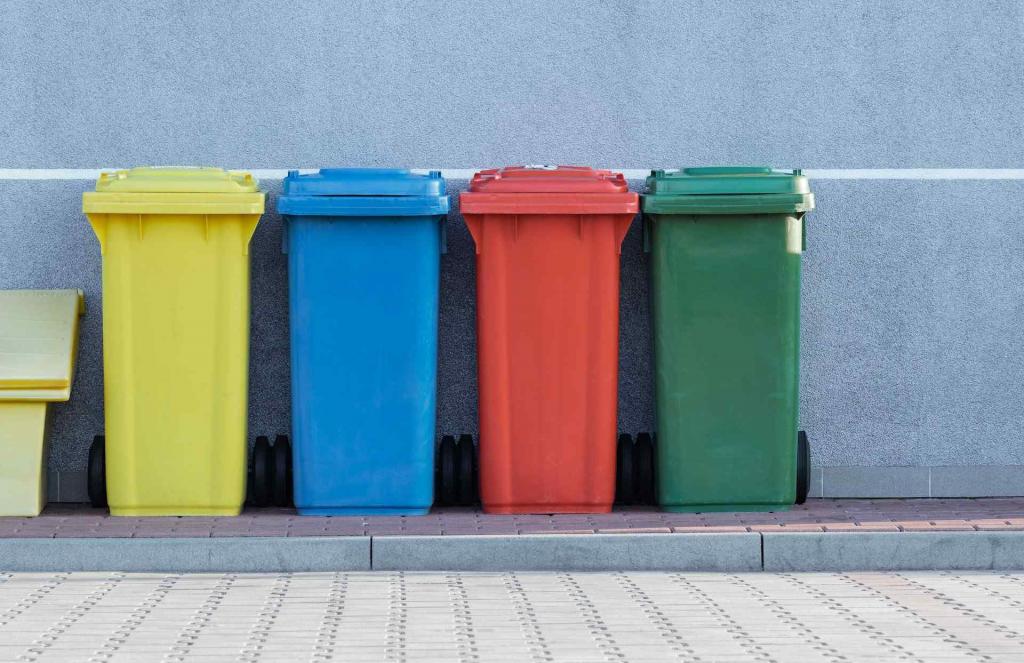Thessaloniki gets ready for its metro launch in November
The underground rapid transit lines have been under construction for almost two decades due to various project delays
 TheMayor.EU logo
TheMayor.EU logo 
With the new regulations, authorities plan to see an increase of the recycling rate of plastics by 20%, Source: Pawel Czerwinski / Unsplash
The new regulations will lead to more recycled materials and officials plan for more in 2025 and 2030
On 1 January, new recycling rules will kick in in Austria, unifying regional practices around the country. According to a statement by Environment Minister Leonore Gewessler, this would lead to an increase in the recycling rate of plastics by around 20%.
Additionally, according to an official report by Altstoff Recycling Austria (ARA), this year households produced noticeably less waste in 2022. The ARA report attributes this to the cost of living crisis and people consuming less.
The big change is that all plastic packaging like yoghurt pots, plastic bags, bottles, etc. can all be put in the yellow bin. This has been the case for Vienna and the Federal State of Lower Austria, but other federal states have multiple bins or even refuse to take in anything other than plastic bottles.
This is supposed to boost the recycling rate of plastics by around 20%, according to data by the ARA. According to the government’s recycling plan, from 2025 people can also throw away metal in yellow bins.
Again, this practice is commonplace in Vienna and Lower Austria, however, different states tend to approach the issue in their own ways. This would help Austria reach the EU’s recycling target of 50% by 2025 and a rate of 55% by 2030. The current recycling rate is 25%
Additionally, there are more ambitious quotas for plastic bottles in particular, with 77% by 2025 and 90% by 2030.
According to the ARA’s end-of-year report, Austrian households have produced less trash, due to the cost of living crisis and inflation stemming from the war in Ukraine. The company reported a 3.5% drop in the collected trash.
The difference was most significant with paper packaging, newspapers and magazines, with a drop of around 6.6%. There was also a noticeable decline in print advertising, like brochures, likely due to the rise of digital advertising and the rising cost of paper. Plastics, meanwhile, fell by 2.4% and metal waste did not change.
The recovering tourism industry, on the other hand, has led to an increase in trash collection around the holidays by around 2.5%. This is an increase of around 32,000 tons compared to the lockdown year of 2021.

The underground rapid transit lines have been under construction for almost two decades due to various project delays

Now you can get your wine in Talence by paying directly in Bitcoin

That’s because the state has to spend money on updating the railway infrastructure rather than subsidizing the cost of the popular pass

Rethinking renewable energy sources for the urban landscape

The examples, compiled by Beyond Fossil Fuels, can inform and inspire communities and entrepreneurs that still feel trepidation at the prospect of energy transition

Now you can get your wine in Talence by paying directly in Bitcoin

The 10th European Conference on Sustainable Cities and Towns (ESCT) sets the stage for stronger cooperation between the EU, national and local level to fast track Europe's transition to climate neutrality.

At least, that’s the promise made by the mayor of Paris, Anne Hidalgo

The underground rapid transit lines have been under construction for almost two decades due to various project delays

At least, that’s the promise made by the mayor of Paris, Anne Hidalgo

Hostal de Pinós is located in the geographical centre of the autonomous region

Despite its church-y name, the district has long been known as the hangout spot for the artsy crowds

Urban dwellers across the EU are having a say in making their surroundings friendlier to people and the environment.

Forests in the EU can help green the European construction industry and bolster a continent-wide push for architectural improvements.

Apply by 10 November and do your part for the transformation of European public spaces

An interview with the Mayor of a Polish city that seeks to reinvent itself

An interview with the newly elected ICLEI President and Mayor of Malmö

A conversation with the Mayor of Lisbon about the spirit and dimensions of innovation present in the Portuguese capital














